How To Get Rid of Acne Scars: Best Treatment Options & More
How To Get Rid of Acne Scars: Best Treatment Options & More
While most types of active acne live temporarily on the skin, acne scars often take up long-term residency (deep down or on the surface) of your complexion. Acne scars reflect minor skin injuries that result from active breakouts of inflammatory acne. These breakout remnants are more severe than the post-inflammatory hyperpigmentation that occur after popping pimples or picking at your acne. Acne scars occur when acne penetrates the skin too deeply and damages the tissue beneath it. Different types of acne scars can all be classified as either depressed or raised scars. The type of acne scar that develops depends on how much collagen was produced during the wound-healing process. Some acne scars respond well to skincare ingredients like retinol or vitamin C, while others require more intense prescription medications or frequent cosmetic treatments (such as microneedling).
Expert Tip: Zensa Healing Cream contains medicinal-grade calendula oil and grapefruit essential oils. These natural skincare ingredients offer anti-inflammatory and collage-stimulating benefits to the skin and encourage healthy cellular turnover to help reduce the appearance of acne scars and prevent future scars from forming. Calendula oil and grapefruit essential oil prevent active breakouts, thanks to their anti-bacterial, hydration and astringent properties, respectively, which protect against future scarring or hyperpigmentation. Apply Zensa Healing Cream twice daily as the final step in your nighttime routine or right before using sunscreen to complete your morning skincare routine.
Read on to learn more about the different types of acne scars, the best ways to get rid of acne scars, including the best treatment options (skincare products, home remedies, cosmetic treatments) and tips on how to prevent (future) acne scars from forming.
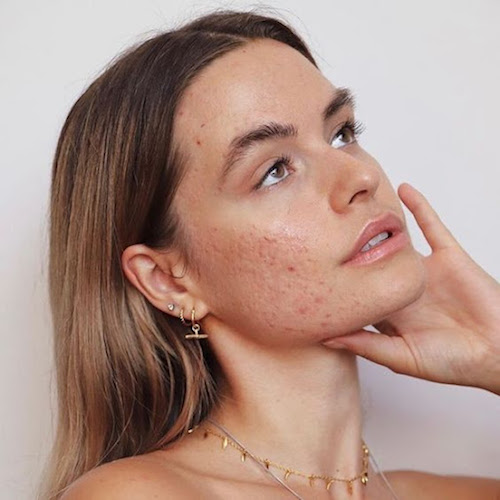
Credit: Millionaire Beauty UK/Pinterest
What are Acne Scars?
Acne scars are the result of inflamed acne that penetrates the skin deeply enough to disrupt the skin’s natural wound-healing and cellular turnover processes. When active breakouts get severely inflamed or are left untreated, these inflammatory bumps damage the tissue below the skin’s surface. During this recovery stage, this tissue damage results in either too little or too much collagen production as the skin regenerates itself to heal the wound. Acne scars are the result of inflammatory acne blemishes (papules, pustules, cysts and nodules).

Different Types of Acne Scars
There are two classes of acne scars defined by how your collagen production is disrupted during the wound-healing stages: Atrophic (depressed) and Hypertrophic (raised) scars.
Atrophic acne scars develop when not enough collagen is produced during the wound-healing process. These scars have a sunken-in appearance compared to the surrounding skin. Atrophic scarring is most common on the face. There are three main types of atrophic scars: Boxcar, Ice Pick and Rolling acne scars.
Boxcar Scars: Characterized by their wide U-shape presentation, boxcar scars appear like sunken craters on the skin. These depressed acne scars have sharp vertical edges and can be shallow or deep. The deeper your boxcar acne scars, the more difficult they are to get rid of.
Ice Pick Scars: These acne scars are narrow, V-shaped scars that often sit deep below the skin's surface. They most commonly form on areas where the facial skin is thinner, like the upper cheeks and forehead. Ice Pick scars appear like small ovals or holes that have punctured the skin. They are usually caused by severe types of acne, including cysts and papules that implant themselves deeply into your pores. Ice Pick scars are generally considered the most challenging type of acne scars to treat because they can be embedded far below the skin’s uppermost layer.
Rolling Scars: Appearing as wide and depressed indents on the skin, rolling scars are characterized by their slopped, rounded edges that create an uneven skin texture and wavy appearance. This type of acne scar tends to form on the lower cheeks or jawline (thicker areas of facial skin).
Hypertrophic scars form when collagen production goes into overdrive as the skin repairs and creates an elevated bump on the skin. These raised scars usually develop on the chest or back. While similar, do not confuse a hypertrophic scar for a keloid. Keloids, unlike hypertrophic scars, extend beyond the bounds of the original skin injury, tend to be more voluminous and do not regress over time. Hypertrophic scars are considerably more common than keloids and will often (gradually) improve within several months or after a year on their own. If a raised scar appears rather large and remains stagnant over time, you might have a keloid and need to seek treatment from your doctor or dermatologist. Keep in mind: Keloids and hypertrophic scars are a cosmetic concern and do not imply that you’re experiencing symptoms of a health-threatening condition.

How To Get Rid of Acne Scars
-
Home Remedies
-
Skincare Ingredients
-
Cosmetic Treatments
The best treatment options differ depending on the type(s) of acne scars you are seeking to improve. When trying to improve or get rid of acne scars, you also need to consider your skin type and the shade of your complexion. Certain home remedies or skincare ingredients can have adverse side effects, like skin irritation or clogged pores, if you have particularly dry, oily or sensitive skin. If you have a more melanin-rich complexion, stay away from some cosmetic treatment options, like laser resurfacing, dermabrasion and certain types of chemical peels. Unfortunately, these cosmetic treatments often only work well for those with fairer complexions and should not be done on individuals with brown or black skin.
Best Home Remedies For Acne Scars:
-
Aloe Vera
-
Avocado Oil
-
Baking Soda
-
Calendula Oil
-
Cucumber (Extract)
-
Honey
-
Lemon
-
Orange Peel Powder
-
Rosehip Oil
-
Sunflower Seed Oil
-
Turmeric
A 2018 study found that aloe vera is effective in helping reduce skin hyperpigmentation. Aloe vera contains a compound called aloesin that prevents melanin overproduction. As a known skin-lightening agent, aloe vera helps make dark spots and acne scars less noticeable. Aloe vera offers anti-inflammatory and wound-healing benefits, thanks to high levels of vitamins A, C and E and its ability to increase collagen production. These qualities of aloe vera can offer can help prevent acne scars from forming at all or reduce their severity if applied on active acne or immediately following a breakout.
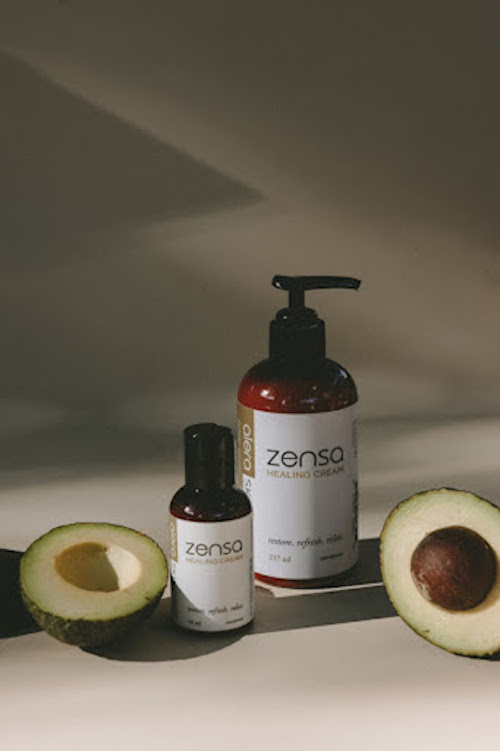
Avocado oil is rich in vitamins A, D and E, along with essential fatty acids and other nutrients that support cellular regeneration and accelerate the skin’s wound-healing process. This plant is a powerful anti-inflammatory agent, thanks to its high antioxidant content, and contains anti-microbial properties to reduce breakouts or signs of post-inflammatory hyperpigmentation from active acne lesions. Avocado oil also offers some protection from UV damage, a common cause of collagen loss and hyperpigmentation. By reducing (and reversing) sun-induced hyperpigmentation, avocado oil can help lighten acne scars and have an overall skin-brighten effect.
When mixed with water, baking soda acts as a powerful DIY exfoliant that reduces the appearance of acne scars. Baking soda offers anti-inflammatory benefits to reduce swelling or redness during active breakouts to minimize scarring from post-inflammatory hyperpigmentation. Its exfoliating properties help unclog pores and soak up excess oil to keep your skin clear and aid the wound-healing process to reduce scar formation. Baking soda is highly alkaline (9 on the pH scale), so, while effective at removing acne scars and dark spots, it should be used sparingly and is not advised for individuals with very dry or sensitive skin. Use 1 tablespoon of baking soda mixed with 2 tablespoons of hot water to create a paste. Apply this paste on your acne scars for up to 20 minutes for the best results.
Calendula oil is a highly nourishing and effective treatment for acne scars, along with an extensive list of its other benefits for your skin. The botanical extract contains anti-inflammatory, antimicrobial and antiseptic qualities that also soothe and hydrate the skin. These beneficial properties of calendula oil soothe any active acne while encouraging cellular turnover and collagen production to accelerate the wound-healing process. These skin regenerating factors help reduce the appearance of acne scars without drying out your complexion. Calendula oil is suitable for everyone – whether you have dry, sensitive, oily or acne-prone skin.
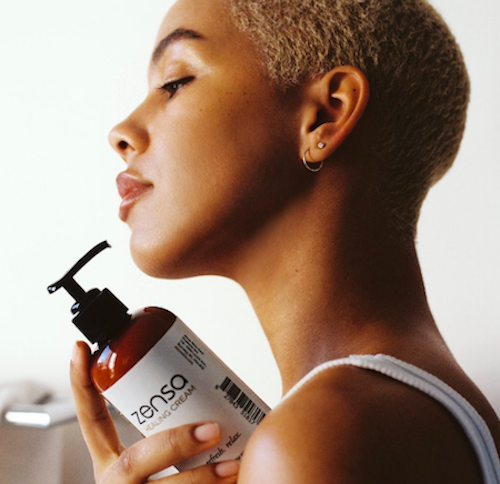
Zensa Healing Cream contains medicinal-grade calendula oil as a main ingredient, alongside skin-brightening grapefruit essential oil and soothing avocado oil, aloe vera, sunflower seed oil and hydrating cucumber extract to reduce existing acne scars, minimize scarring during the active wound-healing process and support your overall skin health.
Cucumber (extract) is a known astringent, meaning it tightens and removes excess oil or impurities from your pores to cleanse and soothe the skin. Alongside their hydrating properties, cucumbers help reduce inflammation to minimize the appearance of acne scars.
Honey supports the skin’s wound-healing process, which may in turn minimize scarring or reduce the appearance of existing acne scars. Unprocessed honey contains antibacterial properties that can help clear skin from active acne breakouts. These benefits of unprocessed honey can prevent post-inflammatory hyperpigmentation or scars. Combine it with other acne-scar-fighting ingredients like lemon, aloe vera, orange peel powder or turmeric for enhanced results.
Lemons contain high levels of vitamin C and citric acid, which both help lighten and reduce the appearance of acne scars. Vitamin C is an anti-inflammatory agent that is rich in antioxidants and increases collagen production. Some other benefits of vitamin C include its skin-brightening properties and ability to protect your complexion from free radical damage or signs of aging. Citric acid is a type of alpha-hydroxy acid (AHA), an exfoliating agent that removes dead skin cells to smoothen and brighten the skin.
Orange peel powder is rich in vitamin C to help brighten skin, lighten hyperpigmentation or dark spots and increase collagen production to reduce the appearance of acne scars. It also contains antibacterial properties, which help get rid of active acne breakouts and minimize chances for potential scarring or post-inflammatory hyperpigmentation. The citrus powder’s natural exfoliating and acne-controlling properties make it ideal for oily skin. Orange peel powder is also suitable for dry skin thanks to its potassium content, which moisturizes and nourishes any flaky or cracked skin.
Rosehip oil contains high levels of vitamin C and anti-inflammatory fatty acids (linoleic acid, linolenic acid and oleic acid) to brighten the skin, lighten dark spots, control oil production and support the wound-healing process to prevent or get rid of acne scars. The plant oil reduces swelling associated with active acne lesions and promotes cellular turnover to minimize the redness or hyperpigmentation of existing acne scars.
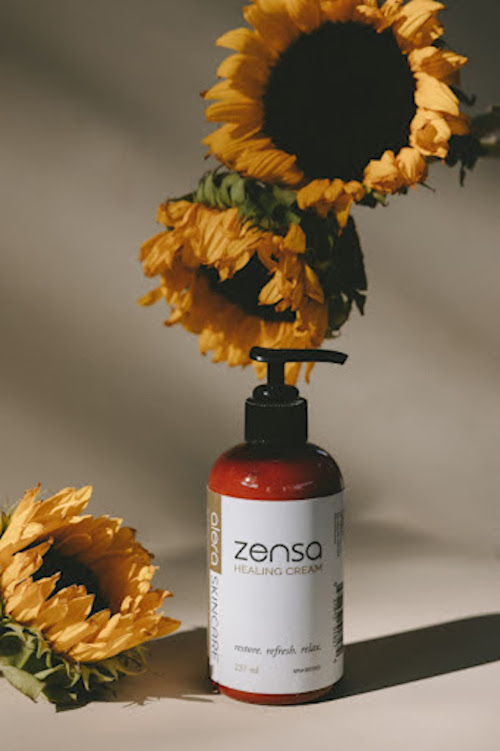
Sunflower seed oil is rich in vitamins A, C, D and E and helps control melanin production to fight acne, brighten skin, support wound healing and lighten or reduce the appearance of acne scars. This botanical oil is non-comedogenic, meaning it won’t clog your pores, and soothes inflammation to prevent emerging acne or resulting post-inflammatory hyperpigmentation or scarring. Sunflower seed oil also contains essential fatty acids to keep the skin’s moisture levels and oil production levels balanced for smoother, brighter skin.
Turmeric contains anti-inflammatory and antibacterial properties to prevent clogged pores, reduce acne, soothe active breakouts and minimize scarring. Aside from its acne-fighting benefits, turmeric is known to help reduce hyperpigmentation, lighten pre-existing acne scars and generally improve uneven skin tone.
Best Skincare Ingredients For Acne Scars:
-
Vitamin C (Serum)
-
Alpha Hydroxy Acids (Glycolic Acid, Lactic Acid)
-
Salicylic Acid
-
Retinol (Vitamin A)
-
Niacinamide
-
Glycerin
Among its many skin benefits, vitamin C lightens and reduces acne scarring, thanks to its complexion-brighten and wound-healing capabilities. Vitamin C stimulates collagen production to resurface the skin and break up clusters of excess melanin or collagen. As a result, vitamin C is known to reduce hyperpigmentation and decrease the elevation of hypertrophic acne scars. A 2013 study found that patients saw noticeable results within 6 months of using vitamin C to treat their acne scars. Use a vitamin C serum or a lotion packed with natural sources of this nutrient. Zensa Healing Cream combines medicinal-grade grapefruit essential oil with other natural sources of vitamin C, such as aloe vera and cucumber extract to prevent blemishes, calm inflammation, reduce hyperpigmentation and the appearance of (new or matured) acne scarring.
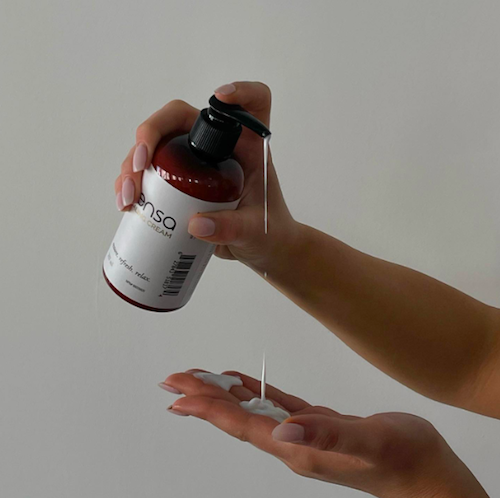
Alpha hydroxy acids (AHAs), like glycolic acid and lactic acid, are a group of water-soluble chemical exfoliants that help resurface the skin resurfacing to reduce hyperpigmentation and lighten acne scars. They encourage cellular turnover and remove dead skin cells to smoothen the tone and texture of your complexion. Glycolic acid is best suited for individuals with normal to oily skin types. Lactic acid is a milder exfoliant, recommended for dry or sensitive skin.
Salicylic acid is a type of beta hydroxy acid (BHA), a type of exfoliant that deeply penetrates the skin to unclog pores and calm redness or inflammation to prevent active breakouts and post-inflammatory hyperpigmentation. While AHAs are more suitable to treat existing acne scars, salicylic acid acts as a preventative solution to keep your pores clear and blemishes at bay to prevent future acne scars from forming (frequent breakouts are a leading cause of acne scarring). Salicylic acid and BHAs are fairly abrasive, so they are generally recommended for individuals with normal to oily or acne-prone skin.
Retinol (a derivative of vitamin A) is known as the secret ingredient for smooth, youthful skin. It increases collagen and cellular turnover to unclog pores, refresh and resurface your complexion. Alongside its anti-aging benefits, retinol is effective in helping reduce hyperpigmentation and the appearance of acne scars. While suitable for all skin types, it is best to slowly begin integrating retinol into your routine (try skin cycling for favorable results). Start with a low-concentration product and use it every few days before increasing the intensity or frequency.
Niacinamide (a form of vitamin B3) offers many of the same skin benefits and is often considered to be a gentle alternative to retinol. It encourages the production of ceramides and stimulates collagen production to lock in moisture and strengthen the skin barrier. Niacinamide accelerates cellular turnover to regenerate the skin, lighten dark spots and reduce acne scars or marks. Niacinamide also helps control oil (sebum) production and contains anti-inflammatory properties to reduce acne breakouts and any post-inflammatory hyperpigmentation.
Glycerin is a humectant skincare ingredient (one that draws water into the skin) that encourages cellular turnover and skin regeneration. It contains exfoliating properties to keep pores clear and reduce hyperpigmentation. These benefits of glycerin help moisturize your complexion and have a brightening effect on the skin. As a result, glycerin is an effective ingredient to use for reducing the appearance of acne scars, dark spots and other signs of hyperpigmentation. Glycerin is naturally found in honey, lemon and many skincare products, including Zensa Healing Cream.

Best Cosmetic Treatments For Acne Scars:
-
Microneedling
-
Chemical Peels
-
Microdermabrasion
-
Dermabrasion
-
Dermal Fillers
-
Cortisone Injections
Microneedling involves using tiny needles to inject the top layer(s) of your skin to create micro-tears that encourage the skin’s self-healing process and stimulate collagen production to replace damaged scar tissue with a fresh layer of healthy skin cells. It can take up to 4-6 treatments (or around 9 months) to see your desired results. However, microneedling should decrease the depth of the acne scar and minimize its appearance after only 1-2 sessions. Microneedling should work well on atrophic or hypertrophic scars and is a great cosmetic treatment option for dark skin (and all other skin tones). Learn more about the benefits of microneedling, how to have a nearly pain-free microneedling experience and the best tips to care for your skin after microneedling (hint: use products containing hyaluronic acid like Zensa Healing Cream).
Chemical peels up the ante when it comes to treating acne scars with chemical exfoliants. Professional chemical peels use either AHA, BHA, PHA, TCA or more intense exfoliating acids to unclog pores, resurface the skin and minimize acne scars or other types of hyperpigmentation. There are 3 general levels of chemical peels: light or superficial chemical peels, medium-depth chemical peels and deep chemical peels. Medium-depth chemical peels are the option most highly recommended to treat moderate acne scars or hyperpigmentation. However, you need to remain cautious if you have dark skin and speak with your dermatologist before booking a chemical peel treatment (often only superficial peels are recommended for those with brown or black complexions).
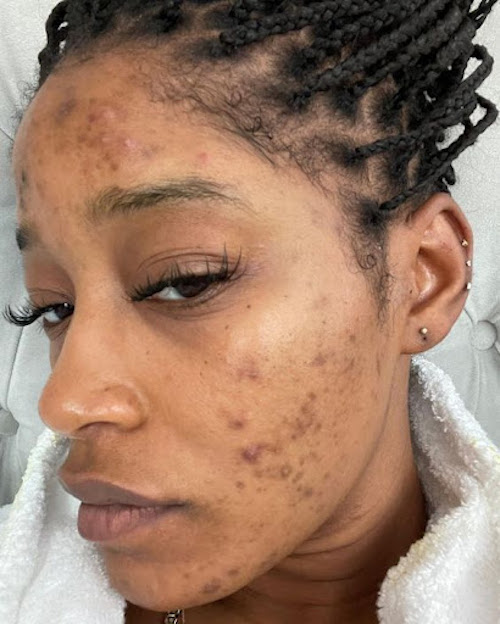
Credit: Ayanna Denise/Pinterest
Microdermabrasion is a professional treatment that uses either a crystal or diamond-tip tool to exfoliate the skin and is known to be effective for treating depressed acne scars. Around 5-12 microdermabrasion sessions are needed to see your desired results when seeking to reduce the appearance of acne scars. Microdermabrasion is safe for individuals with dark skin (and is less painful and invasive compared to microneedling). However, it is best to seek out a professional who frequently performs microdermabrasion on brown or black skin to avoid possible side effects like hyperpigmentation or keloid scars.
Dermabrasion is a skin-resurfacing procedure that uses a rotating device to improve skin tone and texture concerns, like fine lines, wrinkles, age spots and acne scars. This cosmetic treatment is considerably more aggressive on the skin compared to microdermabrasion and is typically only recommended for severe scarring. While microdermabrasion only removes dead skin cells, dermabrasion goes deeper into the dermis and removes “alive” or viable layers of skin. At least 2 weeks of recovery time will be needed after your dermabrasion session. The procedure will be done using a topical anesthetic, like Zensa Numbing Cream. Dermabrasion should only be done on fair skin tones. This procedure can cause discolouration or scarring in individuals with darker complexions.
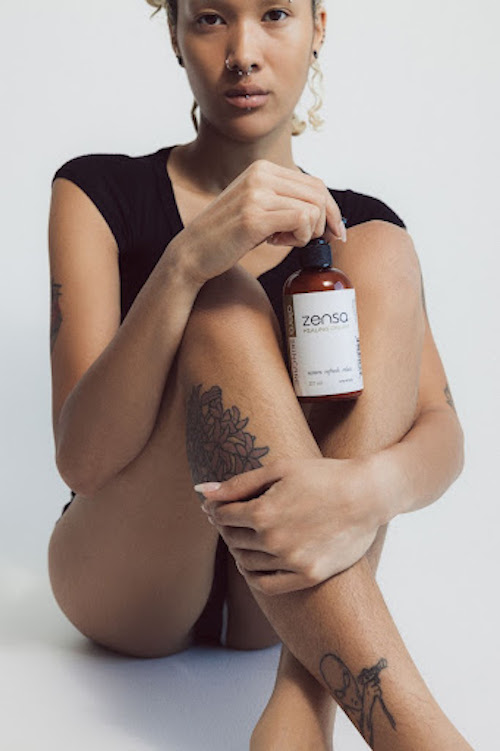
Dermal fillers can treat depressed acne scars by plumping up the damaged tissue to the surface or encouraging collagen production to resurface the skin. A 2015 study shows that dermal fillers improve acne scars on the cheek area by over 50%. Bellafill, a permanent and effective option, is the only dermal filler that is FDA-approved to treat acne scars. However, there are many collagen-containing dermal fillers available on the market, so speak with your dermatologist to find the right option for you. Most dermal fillers provide the desired results after one session. More than one treatment might be necessary for individuals with severe acne scars to receive their ideal results. Most dermal fillers need to be touched up every 6 months to 2 years.
Cortisone injections are suitable for treating hypertrophic acne scars and keloid scars. Cortisone shots should be done at least 6 weeks apart in the same area to avoid skin thinning. Most hypertrophic acne scars and keloid scars improve within 3-6 months of using cortisone injections. Cortisone shots are also used to treat severe cystic acne and swollen nodules as a fast-acting method to prevent future scarring or post-inflammatory hyperpigmentation. These shots should resolve your acne-related concerns within 1-2 days and can be scheduled as needed. Use a product like Zensa Healing Cream after cortisone injections to support the procedure’s anti-inflammatory benefits and prevent the one (rare) side effect of cortisone shots for acne or acne scars: temporary hyperpigmentation (usually lasts for 6-12 months post-procedure). All cortisone injections are administered by a medical professional as recommended by your doctor or dermatologist.
